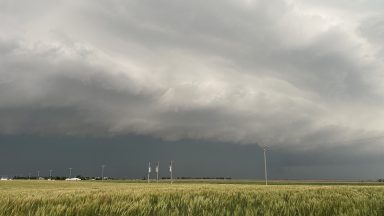
Oklahoma is currently facing a significant weather event that has escalated from severe thunderstorms to a tornado watch, raising concerns among residents. The National Weather Service has issued these alerts due to the potential for extreme weather conditions, including high winds, large hail, and the possibility of tornadoes.
As of late Wednesday night, areas such as southern Oklahoma County and northwestern Cleveland County have been particularly affected. The severe weather has already led to widespread power outages and comes after several days of wildfires across the state, compounding the challenges faced by local communities.
Understanding the extent of this weather event is crucial for residents. Here’s what you should know about the tornado watch in Oklahoma and the severe weather expected in the coming hours.
Areas Included in the Tornado Watch
The tornado watch encompasses several counties in Oklahoma, which are at high risk for severe storms. The counties included are:
- Adair
- Cherokee
- Delaware
- Haskell
- Latimer
- McIntosh
- Mayes
- Muskogee
- Okfuskee
- Okmulgee
- Pittsburg
- Sequoyah
- Wagoner
Duration of the Tornado Watch
Meteorologist Travis Meyer provided insights into the timing of the severe weather threats:
- Northwest of Tulsa: 7 p.m. — 10 p.m.
- Tulsa Metro & I-44 Corridor: 10 p.m. — midnight
- Southeast of Tulsa: Midnight — 3 a.m.
What to Expect in Oklahoma
The National Weather Service has warned that residents can expect several dangerous conditions, including:
- Possibility of tornadoes
- Hail the size of tennis balls
- Wind gusts up to 75 mph
- Evening temperatures reaching the mid-70s
According to meteorologist Jon Porter from AccuWeather, the conditions are highly favorable for a tornado outbreak. He emphasized that all necessary ingredients for severe storms are present, warning of the potential for thunderstorms with winds exceeding 80 mph.
Porter explained that these tornadoes can be intense and long-lasting, capable of causing extensive destruction. Residents in areas at risk should take immediate action upon receiving alerts and stay updated with the latest weather information as conditions change.



